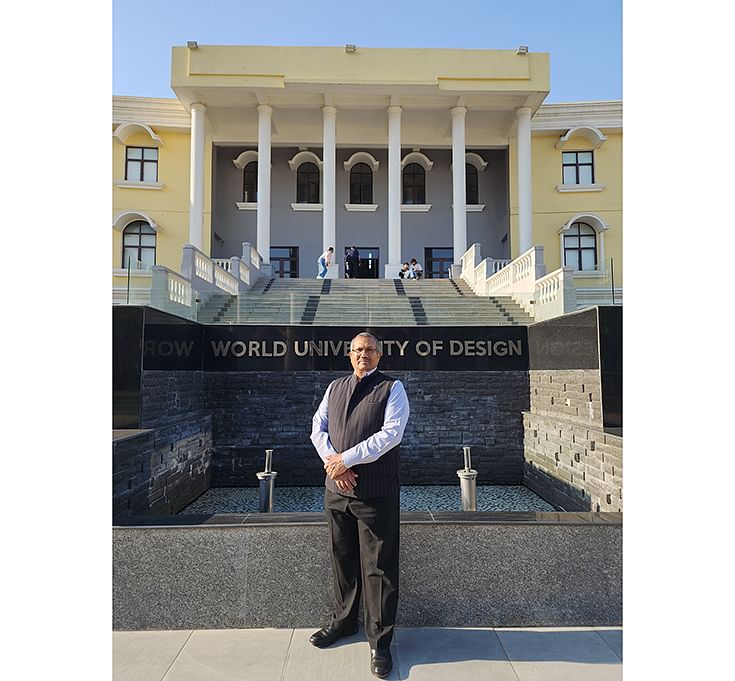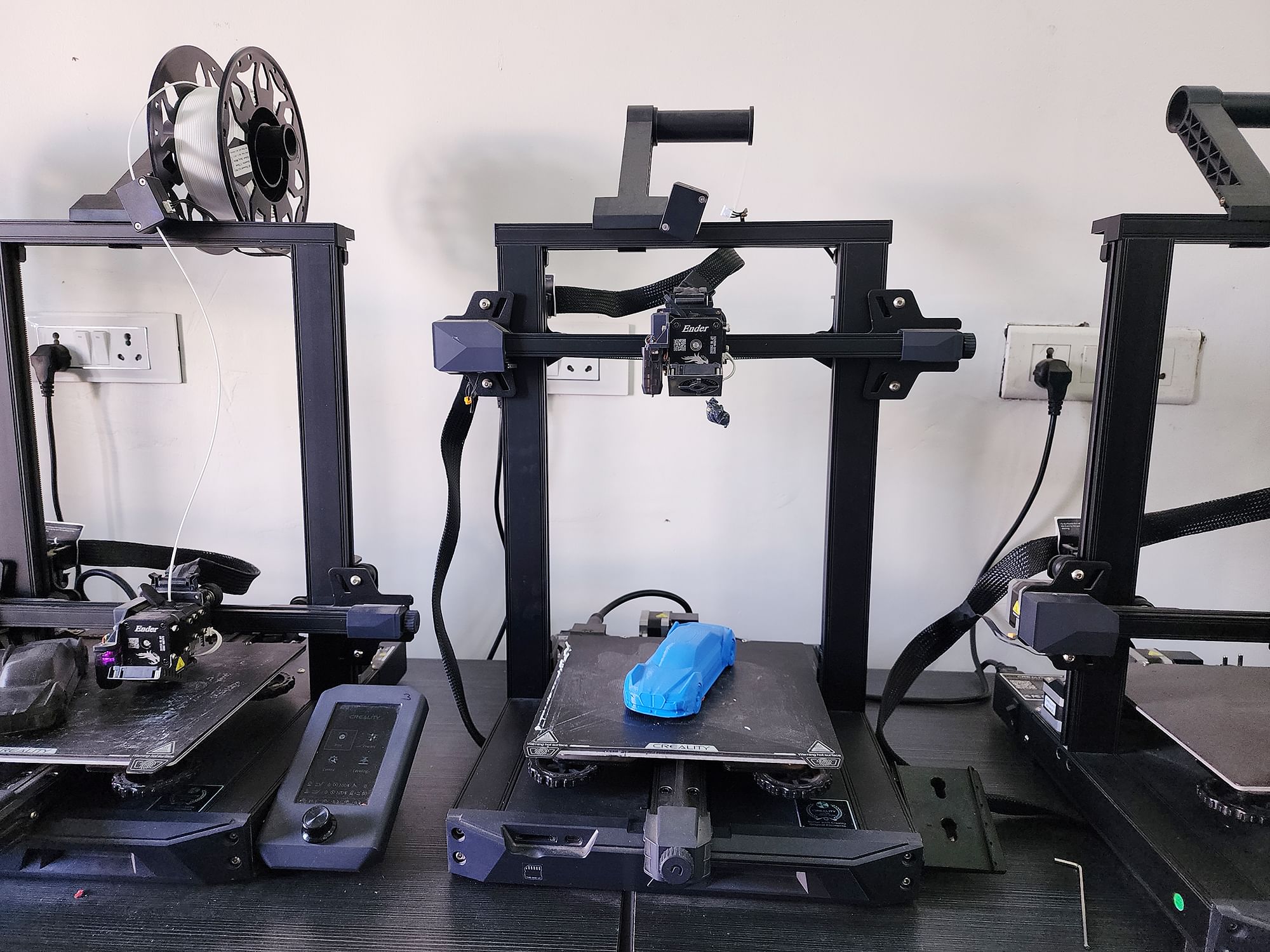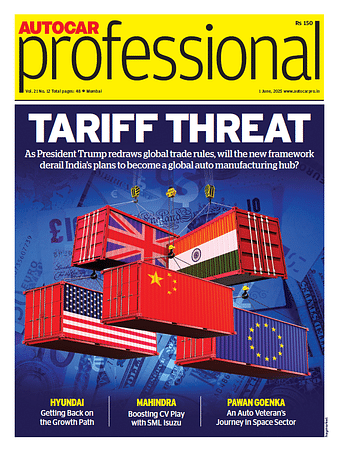Transportation design courses at World University of Design in Haryana draws many
The Sonipat, Haryana-based design university has Bachelor’s and Master’s degree courses in Transportation Design comprising a judicious mix of theory and practical sessions in well-equipped design studios using modern styling tools.
The Sonipat, Haryana-based World University of Design, which is a privately-owned, end-to-end design school spanning fashion design, communication design, visual arts, as well as architecture and transportation design, is seeing a growing offtake of its undergraduate and post-graduate courses.
The university is witnessing growing demand for its Bachelor’s in Design (B.Des) and Master’s in Design (M.Des) courses, particularly in Transportation Design, which offers tremendous potential in the automotive industry. The programmes aim to offer vast exposure by imparting rigorous hands-on training to students.
While the four-year B.Des in Transportation Design involves making students understand the various forms of automotive design, consumer psychology, aerodynamics, conceptualisation, and rendering, the two-year M.Des programme levels it up with extensive market research activities and industrial internships. Interestingly, with growing digital interactions between vehicles and their users, the World University of Design also offers a one-year Diploma in Professional Automotive Modelling, as well as a B.Des in UX and Digital Product Design, and an M.Des in UX and Interaction Design.
 Dr Sanjay Gupta: "We impart students with the desired skills, including clay and 3D modelling, that are much sought-after in the automotive industry."
Dr Sanjay Gupta: "We impart students with the desired skills, including clay and 3D modelling, that are much sought-after in the automotive industry."
According to Dr Sanjay Gupta, Vice-Chancellor, World University of Design, “While we only had the NID (Ahmedabad), NIFT, and some of the IITs offering post-graduate courses in certain design subjects such as industrial design, and communication, India still lacked an all-encompassing design school. That germinated the idea of the World University of Design in 2017 that would eventually encompass all forms of arts and design under one umbrella as these are all creative streams and overlap with each other to an extent.”
Gupta states that the university offers over 30 programmes across fashion, textile, transportation, graphic design, animation, interior design, and visual arts, among others. The UGC-approved standalone university has 70 faculty members, and over 1,200 students across all streams. Though still predominantly done overseas, Gupta believes there is a growing intervention of Indian designers in modern automotive products, particularly meant for the Indian market.
“Aesthetics lead the way for design in the automotive industry, and with that consideration, we focus on imparting the sensibilities of shapes, colours, aerodynamics, as well as ergonomics, in the curriculum within Transportation Design. We impart students with the desired skills, including clay and 3D modelling, that are much sought-after in the automotive industry,” he highlighted. While the university witnesses a healthy diversity, with a girl-to-boy ratio of 60 percent and students coming from across 22 states in India, the Transportation Design courses are more male-oriented.
 State-of-the-art 3D-printing machines and Blender 3D tool help visualise and bring small components to life for undertaking an objective design assessment.
State-of-the-art 3D-printing machines and Blender 3D tool help visualise and bring small components to life for undertaking an objective design assessment.
Focus on modern styling tools
Both the B.Des and M.Des programmes in Transportation Design at the university, see an yearly intake of 40 students each, and focus on leveraging a mix of classroom teaching and practical sessions in design studios that involve hands-on training on modern design tools. Students get experienced in working on solutions such as Autodesk Alias – a computer-aided industrial design tool – as well as the Rhino 3D-modelling tool, which see widespread application in the automotive industry.
“We do not intend to make student masters of any particular software, but our aim is to develop objectivity, critical thinking and an innovative mindset,” Gupta said while adding that students also use artificial reality (AR) and virtual reality (VR) tools to visualise their designs before bringing them to life.
With respect to AI, Gupta added that the university opened an ‘AI Hub’ back in 2019 with the objective of making every student familiar with the technology and its immense future possibilities in design. “We want people to get rid of the fear of AI, and rather embrace the technology in refining their ideas,” he pointed out.
As they approach a new design inside the studio equipped with state-of-the-art digital tools and 3D printers, students first create a mood board to reflect upon the final objective and positioning of the product in consideration. With feedback from market research and interactions with individuals, who are the potential target audience of that vehicle, a design process encompasses the key requirements, including styling, functionality, space, and ergonomics. While clay modelling allows for real-world, nuanced assessment of a design, 3D modelling using the ‘Blender 3D’ tool, particularly helps in case of design and evaluation of small components.
Industry-academia connect drives internships at automakers
Students undertake industry projects by interning at automakers such as Mahindra & Mahindra (M&M) and Escorts, wherein they showcase their learnings in the form of MUV design, hydrogen fuel-cell vehicles, e-three-wheelers, and helmet designs, in their project submissions. RV caravans, bicycles, and boats are also part of the design activities within Transportation Design.
With several design competitions underway across the academic calendar, World University of Design also scores high in terms of students winning accolades in surface-level designing, aesthetic, and interior design, as well as UX and UI design. Students also work on projects for EV startups venturing into the areas of golf carts, and e-two-wheelers. For Akshat Agrawal, a fifth-semester B.Des student, “Designing automobiles has been a childhood dream, and the Transportation Design course gives us tremendous exposure about the way the industry functions. However, when it comes to automobiles, design is still in a developing phase in India, with people increasingly becoming more expressive about their choices.
While it increasingly witnesses major automakers from the Indian passenger vehicle and two-wheeler industry come over for placements, the University of Design has also signed MoUs with Gurugram-based Tigris Design, and Exponiq Engineering Services, which imbibe its students to work on various design projects within in the automotive industry.
Given the growing opportunities, students also foray into setting up their individual design studios, and choose entrepreneurship in a budding sector. “We create an industry-ready workforce with the right aptitude and skill set to tackle the challenges that would lie ahead of them. Our idea is to nurture students and spark their creativity and zeal for innovation,” Gupta pointed out.
ALSO READ: Understanding the future disruptions in automotive design with Autodesk
RELATED ARTICLES
Continental exits TBR market in India, shifts focus to car and SUV radials
German tyre manufacturer aims to tap the double-digit market growth opportunity for big SUV and luxury car tyres which w...
New ZF SELECT e-drive platform gives EV makers a choice in 100 to 300 kW range
Modular e-drive platform optimally matches 800-volt overall system and components such as the electric motor and power e...
Daimler India CV and BharatBenz deliver 200,000th truck
Daimler India Commercial Vehicles' portfolio includes truck models ranging from 10 to 55 tonnes for a wide variety of ap...





 04 Jan 2025
04 Jan 2025
 4016 Views
4016 Views












 Autocar Professional Bureau
Autocar Professional Bureau




